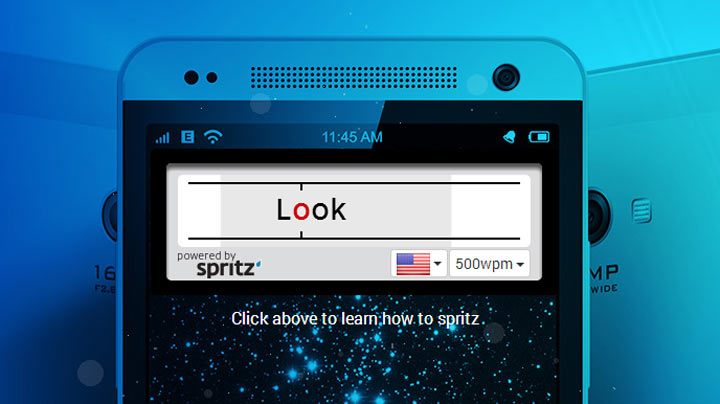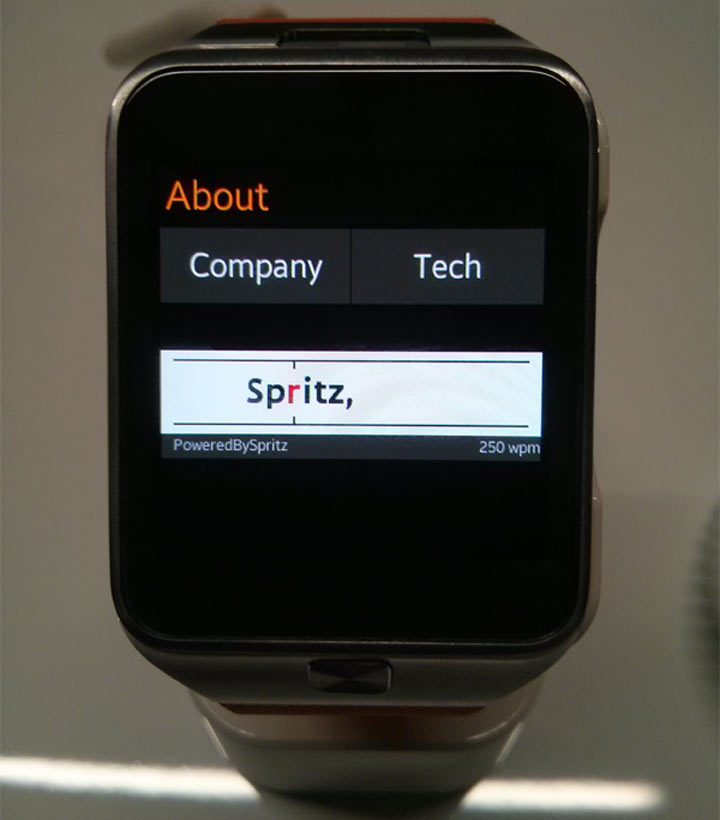TORONTO – Ever wish you could read faster and retain more information without having to scroll, swipe or pinch your way down the screen of your cellphone?

A new text streaming technology called Spritz purports to offer just that: “Content can be streamed one word at a time, without forcing your eyes to spend time moving around the page,” says the website.
The company hopes the product can be used for people who experience dyslexia or other reading disabilities, since it limits available content. They say they’ve had good feedback from dyslexic readers and people with Attention Deficit Disorder (ADD).
The Irish Times reported Tuesday that telecom billionaire Denis O’Brien acquired a minority stake in the company, and one Spritz adviser believed O’Brien was initially interested to see if the product would help improve literacy in the developing world.
Currently you can try English, French, Spanish, German and Russian—plus the company lists Korean in their FAQ section and says Chinese is next.
Spritz uses a display box dubbed “Redicle” to make text more readable: You only get one word on the screen at a time, and horizontal lines and hash marks direct your eyes to one letter in each word that’s coloured red. The font is specially designed for reading on digital devices.

Get breaking National news
While Re/code’s Ina Fried points out it’s not new to have text streamed one word at a time, the way Spritz keeps your eyes on the “Optimal Recognition Point” (ORP—the red letter) means you don’t move your eyes at all. The technology also uses algorithms to make the length of time words are displayed and rhythm of the sentence comparable to a natural reading experience.
The product aims to remove the time-consuming eye movements of reading, and the fact that what they call “traditional reading” takes up lots of physical space. (The company says the human eye can only focus on about 13 characters at a time, and so “spritzing” requires only 13 characters worth of space to show content).
On the site, you can try spritzing between 250-500 words per minute, but the technology can go up to 1,000 wpm. The team suggests starting in the 200-250 wpm range since it can be “intimidating” to start faster than you’d normally read.
Engineer and cognitive scientist James J. Clark studies computer vision, eye movements and visual attention. While the McGill University professor couldn’t comment on potential health implications of the app, he said in an email to Global News that there may be some “minimal fatigue or strain of the muscles” due to keeping your eyes at a fixed location, even if they’re at a “natural” resting point.
“When the eyes are fixed, and there is no change in the surroundings, the neural response to the incoming image diminishes and you perceive a ‘graying-out’ of your vision,” he wrote. “The text is changing, so that will always be visible, but the surrounding will fade away.”
Clark said this can be disconcerting and can take a few moments to recover after you move your eyes away. There’s also the potential for “after-images” which could interfere with whatever you look at next, though he notes this would be more pronounced after reading long texts like an e-book, rather than shorter messages.
He called Spritz a “clever idea” but cautioned against another drawback: the pace isn’t set by the reader.
“There is no way to go back and revisit text previously read, something which happens quite often in normal reading.”
Despite this, the company has been developing and testing for the last three years, and continues testing for additional feedback. It claims new users could learn the technique as well as double their traditional reading speed within minutes.
The startup is Boston-based, founded by MIT grad Frank Waldman, Germany’s Maik Maurer, and technologist Jamie Locke. The group launched Spritz Sunday at the Mobile World Congress, and its first use will be in an email app for the Samsung Gear 2 and Galaxy S5 smartphone (pictured above and below).
The technology is available for licensing to be used by developers in applications, websites, operating systems or devices.
“As smart devices continue to change shape and become increasingly smaller, Spritz enables users to read comfortably and conveniently,” co-founder and CEO Waldman said in a release. “Our technology can be used to read emails, text messages, social media streams, maps or web content and can be integrated onto any mobile device.”








Comments